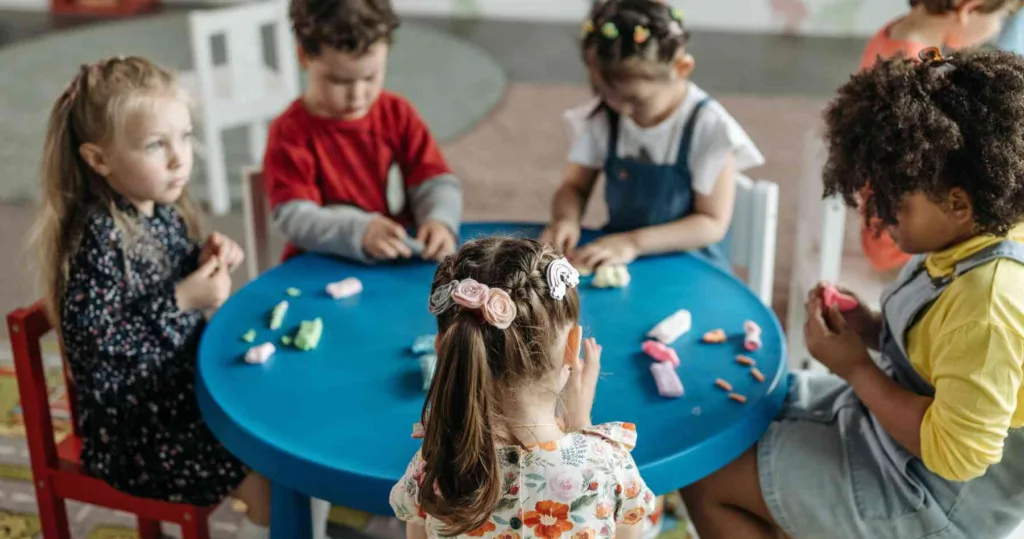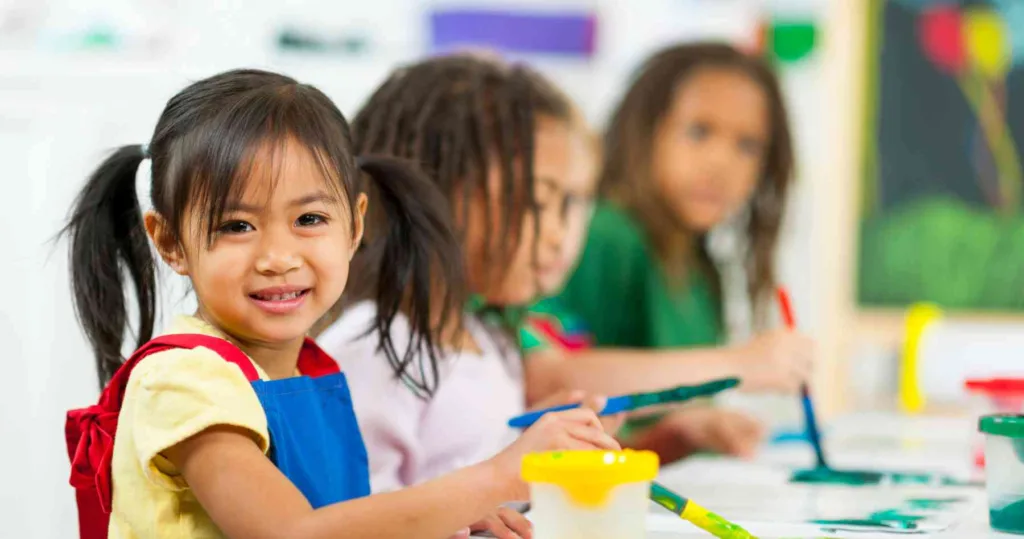Teaching Emotion Regulation to Preschoolers: Tips and Tricks
As a caregiver or educator of preschoolers, you understand the importance of teaching children the necessary life skills to thrive. Emotion regulation is one of the most important skills that preschoolers can learn. In this comprehensive guide, we will explore the importance of emotion regulation for preschoolers, why it is crucial to their social and emotional development, and provide tips and strategies for teaching emotion regulation to young children.
Teaching emotion regulation to preschoolers helps them manage their feelings in a healthy way, communicate their needs effectively, and develop stronger social skills. By incorporating the techniques and strategies outlined in this guide, you can help children learn how to regulate their emotions and navigate the world around them with confidence and resilience. So let’s dive in and explore the many benefits of emotion regulation for preschoolers.

What is emotion regulation for preschoolers
Emotion regulation is the process by which preschoolers learn to manage and control their feelings. It involves the ability to recognize and identify emotions in oneself and others, as well as to express those emotions in a healthy and appropriate way. Preschoolers who learn to regulate their emotions are better equipped to navigate the ups and downs of everyday life, communicate their needs effectively, and build stronger social relationships. Emotion regulation is an essential life skill that provides children with the tools they need to thrive both now and in the future.
Emotional regulation is not just a crucial life skill for preschoolers, but it is also rooted in science. Research has shown that children who have difficulty managing their emotions are at a disadvantage in many areas of their lives, including their social development. Children who lack emotional regulation skills are more likely to struggle with friendships and have fewer social skills.
They may struggle to form and maintain healthy relationships, and their inability to control their emotions can lead to traits like anger, withdrawal, anxiety, or aggressive behavior. In contrast, children who learn how to manage their emotions and communicate their feelings effectively are better equipped to form positive relationships, develop strong social skills, and navigate the social complexities of childhood and beyond.
Understanding Emotions
The first step in teaching emotion regulation to preschoolers is helping them understand what emotions are and how they work. You can start by introducing them to a few basic emotions, such as happiness, sadness, anger, and fear. Use pictures, books, and games to help children learn to identify these emotions in themselves and others.
Model Healthy Emotional Expression
Preschoolers learn by example, so it’s important to model healthy emotional expression. Show children how to express their feelings in a calm, constructive way. For example, you might say, “I feel frustrated when things don’t go as planned, but I take deep breaths and try again.” This helps children learn that it’s okay to feel strong emotions, but there are healthy ways to cope with them.
Practice Self-Calming Strategies
Preschoolers may not have the words to express their feelings, but they can learn self-calming strategies to manage those emotions. Teach children simple techniques such as taking deep breaths, counting to ten, or squeezing a stress ball. Encourage children to practice these strategies whenever they feel overwhelmed.
Get In touch
Leave us a message
4 Claret Road, Table View, 7441
(021) 556 4146
office@applebeekids.com
Create a Safe and Supportive Environment
Preschoolers need to feel safe and supported to develop healthy emotional regulation skills. Create an environment where children feel comfortable expressing their feelings and where they know they will be listened to and understood. Make time for one-on-one conversations with children and validate their emotions.
Use Books and Stories to Teach Emotions
Books and stories are a great way to help children learn about emotions. Choose books that feature characters who experience a range of emotions and talk about how those characters manage their feelings. This can help children see that everyone experiences emotions and that there are many different ways to cope with them.
Encourage Play and Creative Expression
Play and creative expression can be great ways for preschoolers to explore and process their emotions. Provide a variety of materials, such as play dough, drawing supplies, and puppets, and encourage children to create stories and characters that express their feelings.
Help Children Identify Triggers
Preschoolers may not always understand what triggers their emotions, but you can help them identify those triggers. Talk to children about situations that make them feel happy, sad, or frustrated. This can help children become more aware of their emotions and how they are affected by the world around them.
ExcellentBased on 28 reviews
 Pieter Kotze2022-03-11Great pre-primary school in Table View, it has been there for many years and we are now on the verge of sending the 2nd generation there and although they have been around for years, the staff are current and up to date with the latest in childcare and early childhood education, peace of mind for sure...
Pieter Kotze2022-03-11Great pre-primary school in Table View, it has been there for many years and we are now on the verge of sending the 2nd generation there and although they have been around for years, the staff are current and up to date with the latest in childcare and early childhood education, peace of mind for sure... Gareth Bolt2021-08-20Jackie,Maude and Applebee team look after our little boy so wonderfully!
Gareth Bolt2021-08-20Jackie,Maude and Applebee team look after our little boy so wonderfully! Shakurah Hackley2021-08-20My son loves his teachers. They care for our kids and go the extra mile.
Shakurah Hackley2021-08-20My son loves his teachers. They care for our kids and go the extra mile. Nolu Mandindi2021-08-19My daughter been a student since 2019, her brother joined her in 2021, we couldn't be happier with the professionalism shown by the staff. The constant feedback from teachers on progress is on point.
Nolu Mandindi2021-08-19My daughter been a student since 2019, her brother joined her in 2021, we couldn't be happier with the professionalism shown by the staff. The constant feedback from teachers on progress is on point.
Be Patient and Understanding
Teaching emotion regulation to preschoolers takes time and patience. Remember that children are still developing their emotional regulation skills, and they may need lots of support and guidance along the way. Be patient and understanding, and celebrate small victories as children make progress.

How Does Emotional Regulation In Children Develop
Emotional regulation in children is a complex process that develops gradually over time. In infancy, babies rely on their caregivers to soothe and calm them when they are upset. As they grow, children begin to develop the ability to regulate their emotions independently, but this is a skill that requires time and practice to master. Children who grow up in environments that promote emotional regulation, such as supportive families or classrooms that emphasize social and emotional learning, are more likely to develop these skills at an earlier age.
One of the key factors in the development of emotional regulation is the prefrontal cortex, the part of the brain responsible for executive function. This area of the brain plays a crucial role in the regulation of emotions, as well as other important functions such as decision-making, problem-solving, and impulse control. As children mature, the prefrontal cortex undergoes significant changes, which can impact their ability to regulate their emotions. For example, the prefrontal cortex undergoes a significant growth spurt during adolescence, which can lead to fluctuations in emotional regulation. However, with consistent practice and support, children can continue to develop their emotional regulation skills into adolescence and beyond.
Teaching emotion regulation to preschoolers is an important part of their overall development. By helping children understand their emotions, modeling healthy emotional expression, and teaching self-calming strategies, you can help children develop the tools they need to manage their emotions in a healthy way. Create a safe and supportive environment, use books and stories to teach emotions, encourage play and creative expression, help children identify triggers, and be patient and understanding as children develop their emotional regulation skills. With these tips and tricks, you can help preschoolers build the foundation for healthy emotional regulation that will serve them well for years to come.
